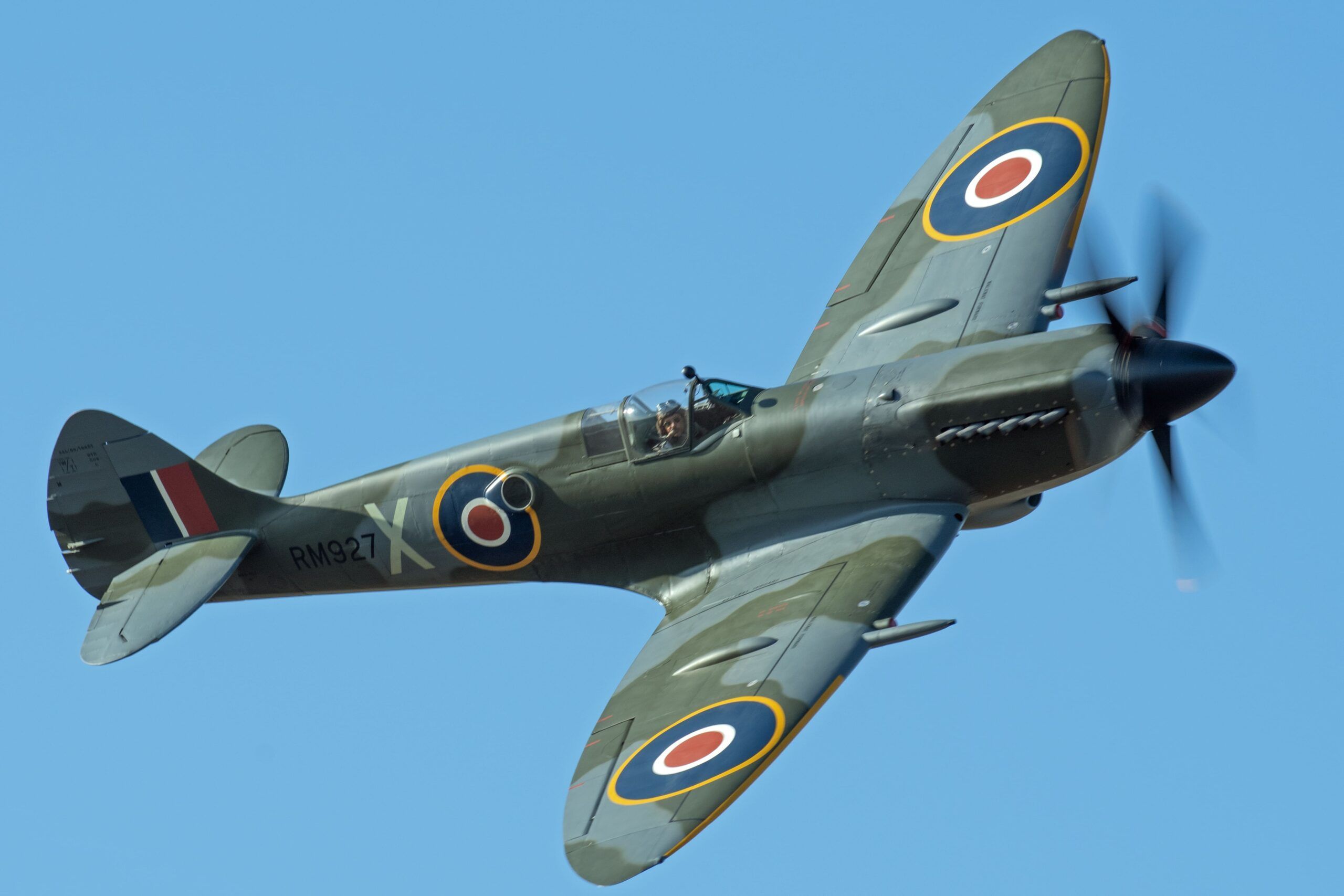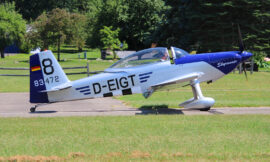The Supermarine Spitfire Mk XIV is one of the most notable variants of the iconic British fighter aircraft, the Spitfire. Developed during World War II, the Mk XIV represented a significant evolution in the Spitfire lineage, incorporating powerful improvements that enhanced its performance and effectiveness in combat. It played a crucial role in the later stages of the war, particularly in countering the threat of advanced German fighters and V-1 flying bombs.
Development and Design
The Spitfire Mk XIV was developed in response to the increasing need for a more powerful fighter to counter the latest German aircraft, such as the Focke-Wulf Fw 190. The previous Spitfire variants, while effective, were beginning to show their limitations against these newer adversaries. The key to the Mk XIV’s enhanced performance was its engine: the Rolls-Royce Griffon.
The Griffon engine, specifically the Griffon 65, was a significant upgrade from the earlier Merlin engines used in previous Spitfire models. The Griffon 65 was a 37-liter, 12-cylinder, supercharged engine that produced around 2,050 horsepower, compared to the Merlin’s 1,750 horsepower. This substantial increase in power dramatically improved the Spitfire’s performance, particularly in terms of speed and climb rate.
The airframe of the Mk XIV was based on the Spitfire Mk VIII but was strengthened to handle the increased power and weight of the Griffon engine. The Mk XIV also featured a five-bladed Rotol propeller to efficiently convert the engine’s power into thrust. The aircraft retained the classic elliptical wing design of the Spitfire, which provided excellent aerodynamic properties and contributed to its agility.
Performance and Armament
The performance of the Spitfire Mk XIV was outstanding, marking it as one of the fastest Spitfire variants produced during the war. It had a top speed of approximately 448 mph (721 km/h) at 25,000 feet (7,620 meters) and could climb to 20,000 feet (6,096 meters) in just under 5 minutes. The Griffon engine’s power gave the Mk XIV a significant edge in both speed and high-altitude performance, making it highly effective against enemy fighters and the V-1 flying bombs.
The Mk XIV was typically armed with two 20mm Hispano Mk II cannons and four .303 inch Browning machine guns, providing a potent mix of firepower. Some versions were equipped with two .50 inch Browning machine guns instead of the .303 inch guns, offering even greater stopping power. The aircraft could also carry bombs and rockets, making it versatile in both air-to-air and air-to-ground roles.
Operational History
The Spitfire Mk XIV entered service with the RAF in early 1944. It quickly proved its worth in combat, with pilots appreciating its superior speed and performance. The Mk XIV was deployed in various roles, including high-altitude interception, ground attack, and reconnaissance.
One of the Mk XIV’s most notable contributions was in countering the V-1 flying bomb threat. The V-1, also known as the “buzz bomb,” was an early cruise missile used by Germany to target London and other cities. The Mk XIV’s speed and climb rate made it one of the few aircraft capable of effectively intercepting and destroying these fast-moving targets.
The Mk XIV also saw action in Europe during the D-Day invasion and the subsequent push into occupied Europe. Its ability to engage and defeat the latest German fighters, such as the Fw 190 and the Messerschmitt Bf 109, helped ensure air superiority for the Allies. The Mk XIV’s performance was particularly valuable in the closing stages of the war, where it continued to engage enemy aircraft and provide close air support for ground forces.
Legacy
The Spitfire Mk XIV is remembered as one of the most powerful and capable variants of the Spitfire series. Its development marked a significant technological leap, and it showcased the adaptability and longevity of the Spitfire design. The Mk XIV’s success in various roles underscored the versatility and effectiveness of the Spitfire as a platform.
Today, the Spitfire Mk XIV is celebrated as a symbol of British engineering excellence and wartime resilience. A few surviving examples are preserved in museums and by private collectors, and some are still flown in air shows, serving as a living tribute to the bravery of the pilots who flew them and the ingenuity of those who designed and built them.
Conclusion
The Supermarine Spitfire Mk XIV stands out as a pinnacle of wartime aviation development. Its powerful Griffon engine, superior speed, and robust armament made it a formidable opponent in the skies over Europe. The Mk XIV played a crucial role in securing Allied air superiority during the critical phases of World War II, and its legacy continues to be celebrated as an enduring symbol of aerial combat excellence.



